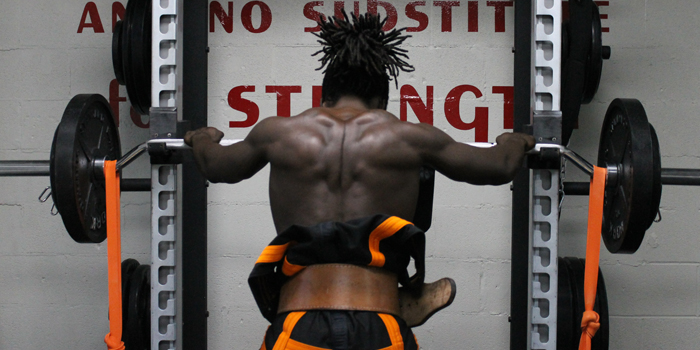
I had heard about triphasic training for a long time — the concept didn't make a ton of sense to me, but it was hard to argue with the results it has produced for many lifters.
In combination with a conjugate setup, the incorporation of a triphasic approach put more than 50 pounds on my squat in four months; in my case, this puts me 27 pounds away from the current drug-tested Canadian record, which, even for an out-of-competition gym lift, made me pretty darn happy.
RELATED: Add 10 Pounds to Your Bench With This 15-Week Conjugate Cycle
This program is designed for an intermediate lifter who has some experience with equipped lifting.
Notes
- 90 percent of all squats were performed to a box.
- During the isometric phases, all pause squats were performed without a box.
- Weekly rotation was between 3 bars: SS Yoke, Rackable Cambered Squat Bar, and Duffalo Bar.
- Weekly rotation was between bands, chains, and free weight.
- Every third week, the box height is raised or stance is narrowed to relieve stress on the hips.
- Week 13 is the circa max phase and should be the most difficult lift of the entire program. You will want about 40 percent of your projected max in band tension.
- Chain weight and band tension are based upon a 450- to 550-pound squatter; adjust accordingly based on your own abilities.
- Most (90 percent) max effort sets were performed in Metal M-type briefs. I found when wearing these my confidence was increased while the compression created recovery for my hips and was invaluable in sustaining the amount of training volume in the program. I would not advise trying to do so raw.
- The final eight weeks of the program are performed with briefs, suit on, straps down, and training wraps. Gear up according to how you feel. Some days (75 percent) felt so heavy, I would need to throw my suit on.
- Every training session starts with two sets of the McGill Big Three, glute activation drills, and front-loaded hamstring and quadriceps work (RPR as needed).
- Don't jump into this program if you haven't already spent some time previously lifting equipped — you will begin handling loads 20 to 30 percent heavier overnight, and your spine won't be prepared for that type of chronic stress.
- There is a deload programmed in Week 7 — but listen to your body and take deloads when needed.
Daily Warm-Ups
These were performed between sets right from an empty bar up to 60 to 70 percent. Even though the warm-up contains a ton of movements, I like to be time-efficient; I refuse to wait 30 minutes before I touch the bar.
- McGill Big Three (2 sets): Bird Dogs — 5 each side; Side Plank — 15 seconds each side; Curl-Up — 10 seconds, 3 reps each side
- Glute Activation (2 sets): Single Leg Glute Bridge — 6 reps each side; Side Lying Leg Raise — 6 reps each side
- Band Terminal Knee Extension —15-20 reps or Kettlebell Sissy Squat — 15 reps x 3-5 sets
- Wall Good Mornings — 15-20 reps or Band Good Mornings — 3-5 sets
View this post on Instagram225 +#bands + #chains to get that bar moving #FAST! #hustle #lvd #houseofbiceps #singleply
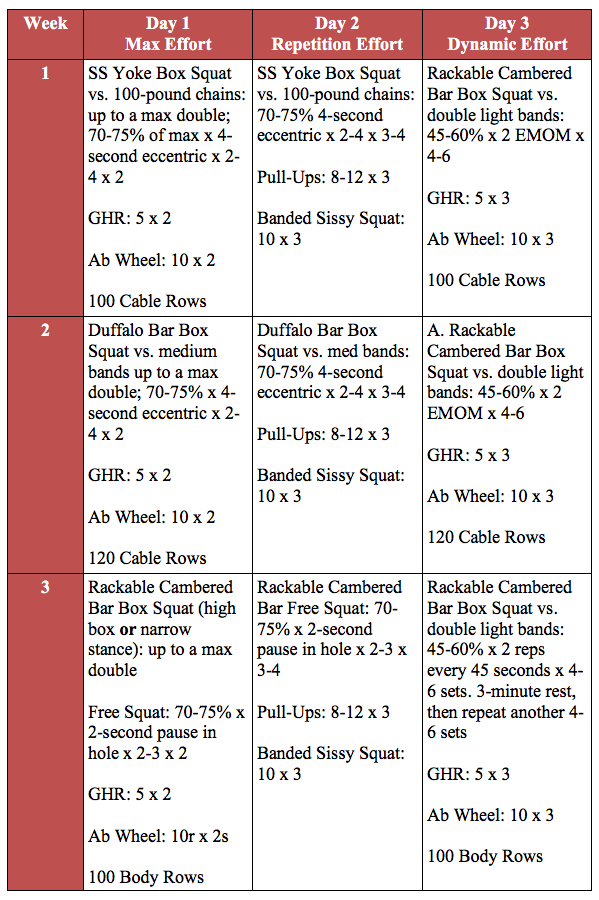
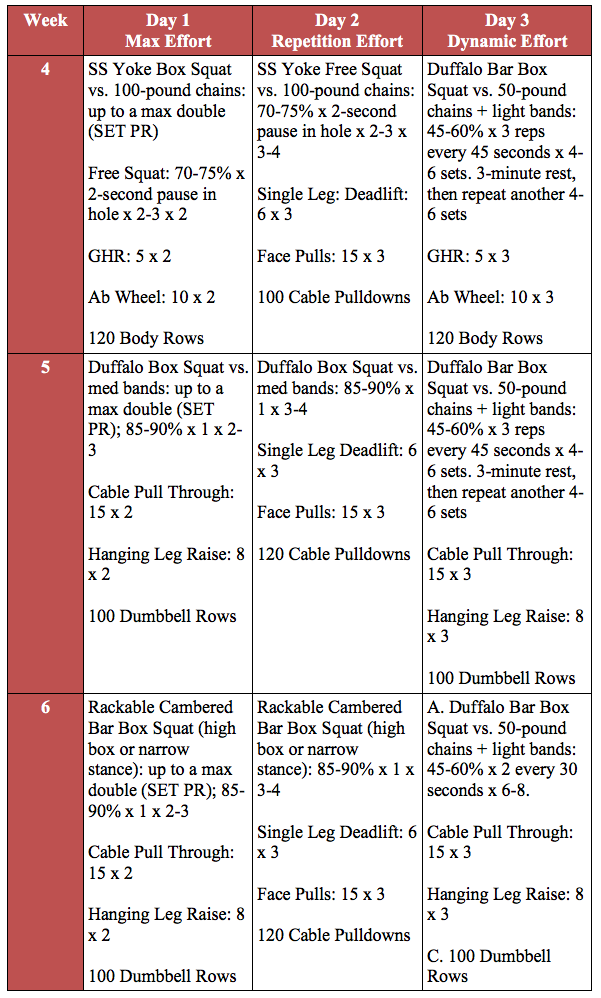
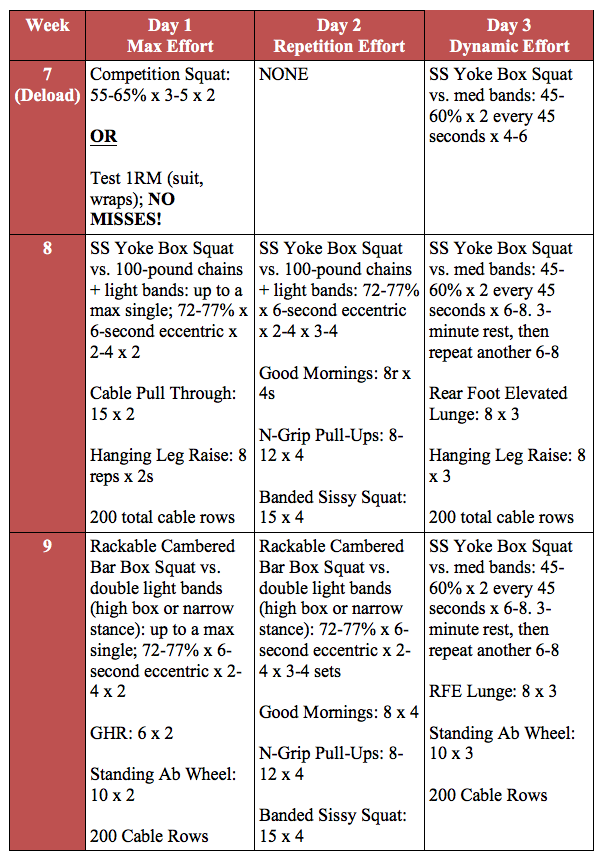
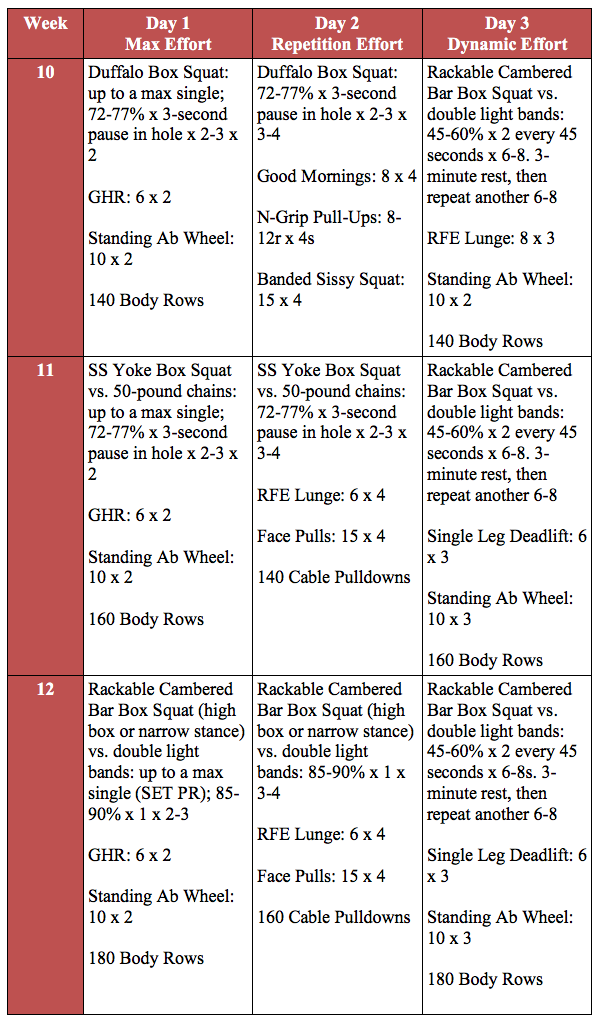
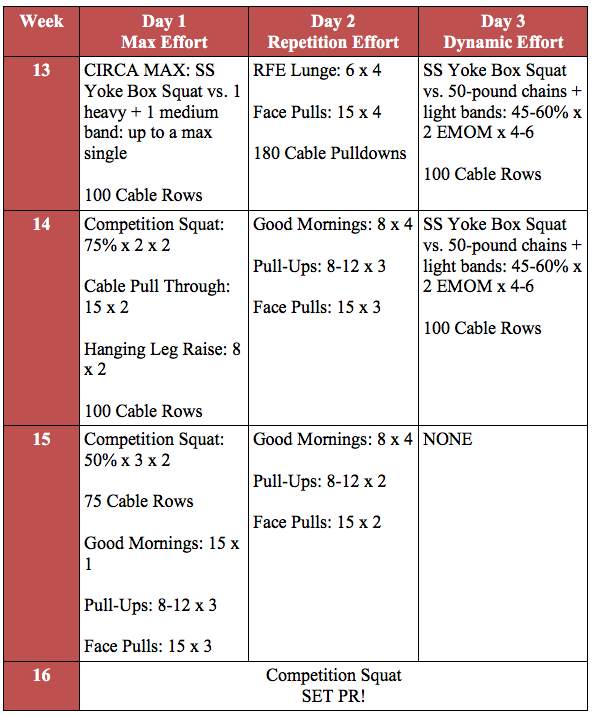
Jordan Guilford is a sports performance coach and a competitive powerlifter and strongman based out of Toronto, Ontario. He spent four years as a fitness instructor with the Canadian Armed Forces and is currently the fitness director at Canadian Ice Academy, an elite training center for hockey players and figure skaters. He also owns Vej Athletics Training and Performance. You can contact Jordan via email at jordan@vejathletics.ca.











Pumped to give this a run when Squatober finishes up!
Most weeks for me this was a Sunday (or Monday), Wednesday, Friday Split. During the eccentric phase both CNS stress and mechanical/metabolic stress are high -- so sometimes 2 days is needed between sessions to recover. It's all about getting in the amount of work you can recover from and not doing harm to the next training session.
Hope that helps!
I wasn't deadlifting or benching AT ALL during this training cycle. I know for some lifters the thought of not doing all 3 lifts for any significant period of time throws them into a panic. I love squatting because I'm good at it, so I went all in on this lift. I know if my squat strength is through the roof it won't take long once I return to deadlifting for the technique to come back and hit PR's in that lift as well. And I don't really bench because -- I suck at it and I hate it!
I would suggest most people do the same for this program -- you can see there is a lot of high volume back work and you could also add in some dumbbell or accessory pressing on off days (I still wouldn't do MAX EFFORT benching) most lifters will build a significant amount of upper body muscularity on this program.